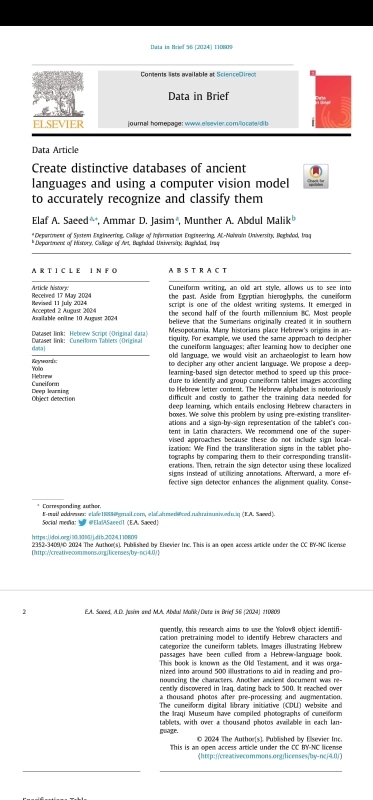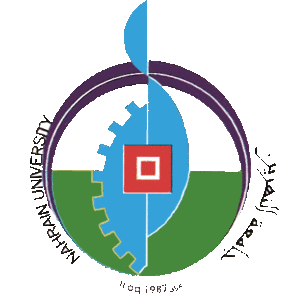
نشر تدريسيان من كلية هندسة المعلومات، المدرس المساعد ايلاف أحمد سعيد والأستاذ المساعد الدكتور عمار داود جاسم، بحثًا علميًا في مجلة Data in Brief التي تصدر عن دار النشر Elsevier. هدف البحث إلى تطوير طريقة مبتكرة تعتمد على تقنيات الذكاء الاصطناعي والتعلم العميق للتعرف على النصوص القديمة وتصنيفها بدقة.
تناول البحث التحديات التي واجهها الباحثون في جمع البيانات، مثل تداخل الحروف أو التلف الذي أصاب النصوص بفعل الزمن والعوامل البيئية. كما ركز على النصوص المسمارية والعبرية باعتبارها من أقدم أنظمة الكتابة المعروفة. استخدم الباحثون نموذج YOLOv8 للكشف عن الحروف وتصنيف الصور بناءً على محتواها.
توصل البحث إلى نتائج واعدة، حيث أظهر النموذج قدرة على التعرف على الحروف بدقة تصل إلى 92%، مع إمكانية تصنيف النصوص المسمارية إلى ثلاث فئات رئيسية: سومرية، آشورية، وبابلية.
قدم البحث أداة فعالة تسهم في تسريع ودقة دراسة النصوص القديمة، مما يوفر دعمًا كبيرًا للباحثين وعلماء الآثار في دراسة وفهم تلك النصوص.
للاطلاع على البحث بالكامل الدخول على الرابط التالي:
قسم الإعلام والاتصال الحكومي
رئاسة جامعة النهرين
Two Faculty Members from the College of Information Engineering Publish a Scientific Paper in an International Journal on Using Artificial Intelligence for Classifying Ancient Texts
Two faculty members from the College of Information Engineering, Assistant Lecturer Ilaf Ahmad Said and Assistant Professor Dr. Ammar Dawood Jassim, published a scientific paper in the journal Data in Brief, which is published by Elsevier. The aim of the paper was to develop an innovative method that relies on artificial intelligence and deep learning techniques to accurately recognize and classify ancient texts.
The paper addressed the challenges the researchers faced in data collection, such as overlapping characters or damage to the texts caused by time and environmental factors. It also focused on cuneiform and Hebrew texts as some of the oldest known writing systems. The researchers used the YOLOv8 model for character detection and image classification based on content.
The study achieved promising results, demonstrating that the model could recognize characters with an accuracy of up to 92%, with the ability to classify cuneiform texts into three main categories: Sumerian, Assyrian, and Babylonian.
The paper provides an effective tool that contributes to the faster and more accurate study of ancient texts, offering significant support to researchers and archaeologists in the study and understanding of these texts.
Department of Media and Government Communication
Office of the President of Al-Nahrain University
